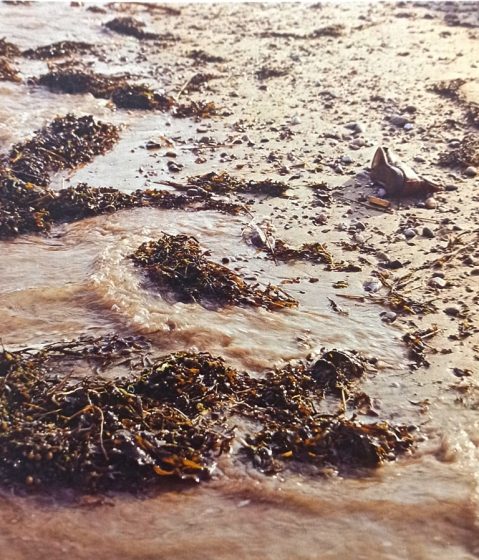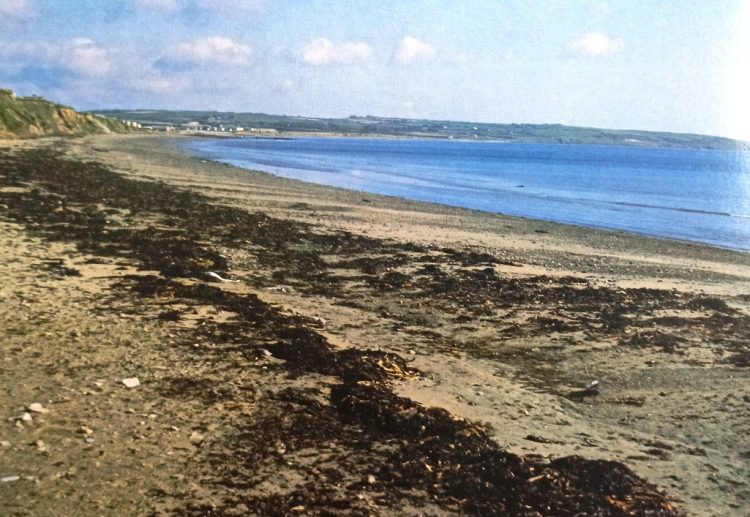Representatives of the great hidden storehouse of life in seas from the most primitive hydroid to an enormous whale may, on the whim of the waves, be cast up on the beach. No longer hidden below the surface but open to inspection, they are to be found in the random struggle of the strandline.
The sea is in constant motion. This is obvious enough on a rough day when the wind has whipped up waves that pound and roar on the beach. But even during calm periods, when hardly a ripple disturbs the surface, great masses of water are being shifted around the coast by tidal currents governed by the phases of the moon.
As the water moves, it transports any material that is floating or in suspension without any independent means of propulsion. A fish may swim against the current, but a dead bird or a cuttlefish ‘bone’ bobs along at the whim of wind and current. Eventually, a proportion of the sea’s cargo reaches the shore where, if an onshore wind is blowing.
The waves carry it to the high watermark on the beach, dump it, and then leave it high and dry as the tide recedes. This abandoned material forms the strandline, stretching the length of the beach (until interrupted by rocky headlands, for example).
If the next high tide takes 12 hours or so later, and rises even higher, this jumble of weed and assorted life is pushed even higher up the shore, augmented by the latest arrivals. If, on the other hand, the tides are decreasing their range as they move from springs to neaps, a new strandline forms lower down the beach; then another below that at the level reached by the subsequent high tide.
A whole series of strandline may mark the progress of the tides from springs to neaps unless, of course, the weather changes and an onshore gale drive them all up to the very top of the beach.
The most dramatic quantities and varieties of strandline debris are usually found after a winter gale, when the prodigious energy of the waves not only transports the existing cargoes but also tears up forests of seaweed, churns living shells from their sandy-bottom havens, and even batters molluscs from their rocks.
Strandline Seaweeds
At first glance, the strandline appears to be nothing more than seaweed, mixed with a variety of man-made junk which always seems to include a smattering of odd shoes, light bulbs, and plastic containers of every conceivable shape and size. Closer inspection confirms that seaweed forms the main bulk of the strandline, but a search reveals many creatures which, in company with the weed, have been cast ashore to die.
If the weed newly arrives it may be damp and glistening, in contrast to that of an old strandline that is dry and cracked on the surface, slimy and rotting in the lower layers. A careful look at the different kinds of weed will distinguish the tenacious disc-like base of the wracks from the huge claw-like holdfasts of the kelps.
The different-shaped fronds, green, brown, and red, are heaped together irrespective of their position in the living community; they include the wracks with air bladders to float them upwards to the light when the tide is in, and some enormous lengths, such as the 6 m (20ft) long bootlace weed (Chorda filum).
The growing plants form a forest of life, with some creatures feeding on the weed, some seeking protection or attachment to it, and some using it to shelter and retain eggs. But when the weed reaches the strandline these different creatures, with different lifestyles, lie cheek by jowl amid the weed, sharing only the certainty of death.
Animals of the Strandline
A fresh strandline is most rewarding. The fronds of weed may bear rasp marks where common limpets have grazed. A beautiful blue-rayed limpet, for instance, with its translucent shell and rows of bright blue spots, may still nestle in a shallow depression eaten in the stripe (stem) of seaweed or may be found in a giant hold fast, to which it migrates in late autumn to avoid being carried away when the fronds break after fruiting.
Many creatures that feed on the passing plankton fix themselves to seaweed; others find temporary shelter. The weed of the strandline displays the limy tunnels of polychaete worms. The flabby are remains of sea-squirts and communities of sea-mats that carpet the fronds with compartments, each occupied by one member of the community. The holdfasts may even shelter tiny porcelain crabs, alive for a while.
Some creatures die on the strandline before ever reaching maturity. The most frequently found are the egg masses of the common whelk (a spongy group of off-white egg capsules that together form a mass about the size of a tennis ball), and the ‘mermaids’
The holdfast of strandline seaweed may well harbor a porcelain crab, alive for a while, before it, too, dies.

Also, seaweed being is washed ashore by the incoming tide. However, the evidence of man’s untidy habits is usually all too clear among the detritus of the strandline. The single odd shoe or boot nearly always turns up. Nevertheless, a close look among the seaweeds will also reveal a surprisingly wide range of natural debris.

Successive tides leave a series of strandlines high on the shore, their presence marked by long lines of rotting seaweed.

Moreover, The strandline seaweed and shells. Often humans, as well as animal scavengers, play a large part in the removal of strandline material. On holiday beaches the authorities fear that the rotting seaweed will prove offensive to the visitors and therefore bulldoze it away. On a more positive note, farmers and gardeners frequently collect it as a rich source of humus and fertilizer.

Whether it is a sackful for the cabbage patch or a trailer-load for the market garden, these sea-borne nutrients have long been collected in the remoter coastal communities-the of Isles of Scilly and the Scottish Islands.
Read More – Amazing Rock Drilling Shellfish
Product You May Interest
-
Feel Emotional Freedom! Release Stress, Heal Your Heart, Master Your Mind
-
28 Day Keto Challenge
-
Get Your Customs Keto Diet Plan
-
A fascinating approach to wipe out anxiety disorders and cure in just weeks, to become Anxiety free, relaxed, and happy.
-
Flavor Pairing Ritual Supercharges Women’s Metabolisms
-
The best Keto Diet Program
-
Boost Your Energy, Immune System, Sexual Function, Strength & Athletic Performance
-
Find Luxury & Designer Goods, Handbags & Clothes at or Below Wholesale
-
Unlock your Hip Flexors, give you More Strength, Better Health, and All-Day Energy.
-
Cat Spraying No More – How to Stop Your Cat from Peeing Outside the Litter Box – Permanently.